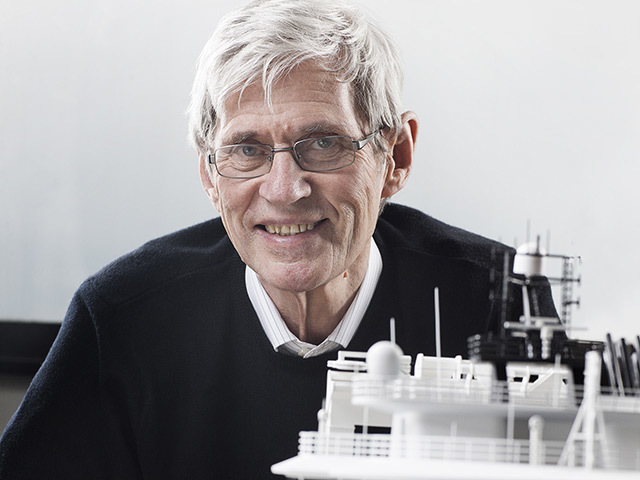
The man who designed the prototype for many of the offshore support vessels working in the North Sea has been given a lifetime achievement award.
Sigmund Borgundvaag, who celebrated his 75th birthday on Sunday, received his honour at an industry bash in London last night.
The Norwegian was recognised at the Offshore Support Journal awards for his contribution to improving the design of offshore support vessels over a span of more than 40 years.
Mr Borgundvaag worked as a naval architect for Norway’s Ulstein Group and then, after its acquisition, for engineering giant Rolls-Royce, where he was chief naval architect from 1970 to 2006.
He still has his office in the group’s ship technology department in Ulsteinvik, Norway.
Offshore support vessels were based mainly in the Gulf of Mexico when oil and gas activity in the North Sea gathered pace in the early 1970s.
The existing technology was unsuited to the rougher conditions on this side of the Atlantic, so Mr Borgundvaag designed the UT (Ulstein technology) 704 anchor-handler – named the Stad Scotsman – and the UT 705 platform support vessel (PSV) to meet local conditions.
These two ships set the North Sea standard for the future and have influenced offshore support vessel design globally ever since.
Between 1974 and 1992, 91 of the UT anchor-handlers and 31 of the PSVs were delivered from yards around the globe, and most are still in service.
Through the 1980s, designs came from Mr Borgundvaag’s drawing board in quick succession, including new classes of anchor-handlers, PSVs, maintenance vessels and field standby ships.
Among the latest designs he has been responsible for is the UT 776, a new generation PSV that runs on liquefied natural gas.
After receiving his award, Mr Borgundvaag, whose designs have a reputation for safety, stability and comfort, said: “I’m extremely proud to have played a part in developing a type of ship that has gone on to play such an important role in the oil and gas industry.
“It has been thrilling to have been involved in fulfilling the demanding requirements of an industry where, as one design challenge is met, there is always a new and exciting one to tackle. “In those early days of North Sea oil, there simply wasn’t a ship robust enough to handle the harsh conditions and heavy seas.
“We drew on generations of experience from fishing these waters, and matched it with the technology needed to operate in a new type of deep-water oil field.”
Recommended for you
